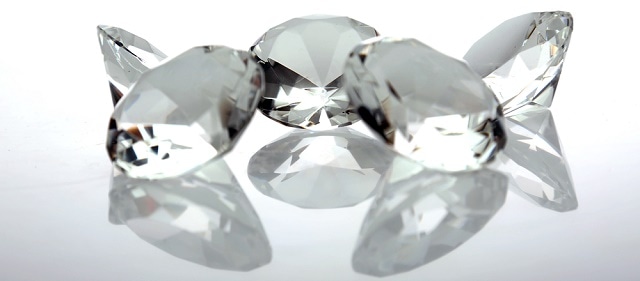May 26 2016
Diamonds are often referred to as “girl’s best friend”, and they also possess certain extraordinary properties which could make them viable as semiconductors.
 Image Credit: mikeledray | Shutterstock.com
Image Credit: mikeledray | Shutterstock.com
This concept is widely welcomed in the electronics sector where there is an increasing need for semiconductors; especially semiconductors for highly efficient electronics capable of delivering and converting power.
The hunger for electronics is unlikely to cease and nowadays almost every device or appliance needs electronic components to control, transfer and convert power. Recently, some researchers have achieved a milestone by finding a new method to dope single crystal diamonds which is an important process for the construction of electronic devices.
We need the devices to manipulate the power in the way that we want.
Zhengqiang (Jack) Ma, Computer and Electrical Engineering Professor, University of Wisconsin-Madison
The new technique is outlined in the Journal of Applied Physics, from AIP Publishing.
Diamonds can be adapted to be used in power electronics as they would be an ideal material. Diamonds are thermally conductive; so diamond-based devices would be capable of dissipating heat easily and rapidly, and would not require heavy and costly techniques to cool. Added to this, diamonds also have the capability to handle high power and voltages. Electrical currents also flow via diamonds rapidly. All of these factors make diamonds the ideal choice for energy efficient devices.
However there is a huge challenge to overcome when creating diamond-based devices – doping. Doping is a method where other elements are combined into the semiconductor to alter its properties. Doping is difficult to perform due to the rigid crystalline structure of the diamond. At the moment, diamonds can be doped by coating the crystal with boron, and heating it to 1450°C. The issue is that the boron coating is difficult to remove at the end. This technique can be used only on diamonds that possess many crystals stuck together. The reason is that these polydiamonds contain irregularities between the crystals, whereas single-crystals would be better semiconductors.
Single crystals can be doped by injecting boron atoms while artificially growing the crystals. The issue is the process needs powerful microwaves to be able to degrade the crystal’s quality.
Now, Ma and his colleagues have discovered a method to dope single-crystal diamonds using boron at comparatively low temperatures and minus the degradation. The researchers observed that when a single-crystal diamond is bonded with a silicon piece doped with boron and heated to 800°C, which is comparatively lower than conventional methods, the boron atoms begin to travel from the silicon to the diamond.
It was noticed that the boron-doped silicon did have some defects such as vacancies. Vacancies are caused when an atom goes missing in the lattice structure. These vacancies are then filled by carbon atoms from the diamond, leaving vacant spots for the boron atoms.
This method also opens up the possibility for selective doping, which means better control when manufacturing devices. The location of where to dope a single-crystal diamond can be selected, and then the silicon can be bonded to that spot.
The novel technique can be used for P-type doping alone, where the semiconductor is doped with an element which offers positive charge carriers.
We feel like we found a very easy, inexpensive, and effective way to do it.
Zhengqiang (Jack) Ma, Computer and Electrical Engineering Professor, University of Wisconsin-Madison
The team is now working on a simple device with P-type single-crystal diamond semiconductors.
However if electronic devices have to resemble transistors, N-type doping will be required as this would provide the semiconductor negative charge carriers. There are still some hurdles to overcome, such as the cost factor of diamonds and the small size of single crystals.
Nevertheless Ma believes that accomplishing P-type doping is a significant step, and could pave the way for others to discover solutions for the other challenges. Finally, he concluded by stating that single-crystal diamond could be applicable everywhere including delivering power via the grid.
Source: http://www.aip.org